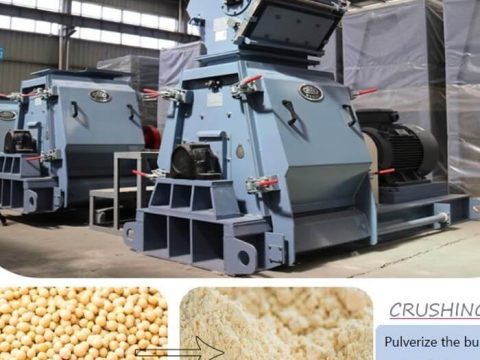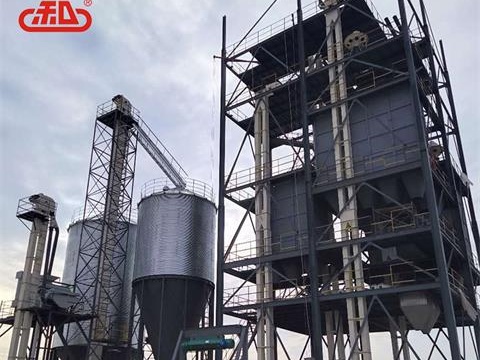The quality and durability of pellet feed are affected by pellet shape, raw material characteristics and feed mill processes (such as crushing, mixing, conditioning, moisture addition and pelleting).
Feed mill procedures and standards are also critical.
Approximately 20% of the particle mass depends on the crushing process. Grinding the feed to the appropriate particle size is an essential first step in feed production as it has a great impact on the nutrient absorption of the feed. Particle size depends on what is being fed - poultry feed requires coarser particles, while pig or piglet feed requires finer particles.
Finer grinding makes it more permeable to heat and moisture. Grinding the feed to less than 300 μm helps improve the gelatinization effect during conditioning and produces high-quality and durable pellet feed. Coarse grinding increases the risk of the pellets becoming brittle or broken because gelatinization is less efficient due to the longer time it takes for heat and moisture to penetrate the pellets.
Particle size should be factored into die hole specifications. For example, if you use a die hole with a diameter of 4.0 mm, but use a screen with a hole diameter larger than 4.0 mm, you will end up using the granulator as a crusher to re-grind the feed. This will have a negative impact on the performance of the granulator and the quality of the granules. Check the recipe and make sure the equipment is set up correctly to achieve the specified particle size to avoid re-crushing.
Mixing is the heart of the feed mill. The purpose of the mixing process is to obtain a powder containing all the nutrients required by the animal. This effect is almost impossible to achieve without testing or checking the mixing effect. Two factors that influence the effectiveness of feed mixing are the particle size of the ingredients and the efficiency of the mixer, the latter evaluated by the coefficient of variation (CV%). The coefficient of variation is a measurement that proves that any feed sample taken at a feed mill or any pellet fed on a farm contains the nutrients intended by the formulator. Basic factors that influence mixing results include the type of mixer used, its capacity and mixing time. Ingredients must be at the correct level. Long mixing time does not mean good mixing effect. The order in which you add the ingredients is also important. The hybrid system needs to be evaluated, monitored and tested after every change. The standard CV value of complete feed is between 5-10%. If it exceeds 10%, it indicates that the mixing system needs to be improved, such as increasing the mixing time or adjusting the mixer parameters.
Pellet Durability Index (PDI) is a pellet quality indicator that reflects the probability that the feed will reach the animal intact for consumption. The ideal PDI value is above 90-95%. Achieving this goal helps avoid wastage of feed during transportation or consumption on the farm. Factors affecting PDI include feed formula, crushing particle size, conditioning, cooling, overall equipment conditions and die hole compaction rate, and feed ingredients. A higher PDI helps the animal save energy used to pick up smaller particles. In addition, the nutritional value of the feed is also optimized, with less nutrients lost through crushing.
Moisture affects the shelf life, texture, pellet durability and starch gelatinization of pellet feed. Optimizing moisture helps reduce shrinkage due to inherent moisture loss during storage, crushing and cooling. Adding controlled levels of moisture at specific stages of the pellet production process improves quality, digestibility and processing efficiency. For example, adding steam during the conditioning process can improve the viscosity of the powder. Steam can change the physical and chemical properties of the feed, provide lubrication and adhesion, and improve the feed molding rate. Steam also helps feed feed pass through the pelletizer die holes, thereby improving feed digestibility and reducing processing costs. Moisturizing technology additives can be used to increase water permeability and adhesion, as well as starch gelatinization. These additives provide moisture to the feed, ensuring that the feed reaches the conditioner with a moisture content of approximately 14% to 15%. The ingredients in Fylax Forte-HC liquid feed can withstand processing temperatures and remain active long after feed production, transportation and storage.
Many factors affect the quality and durability of pellet feed. Producing high-quality pellet feeds can be made easier by taking into account the processes involved, understanding the pellet size requirements of specific animal species, and optimizing equipment settings.

After purchasing a good feed grinder, if it is not used correctly, it will not only shorten the service life of the feed grinder, but also affect the work efficiency, resulting in half the result with twice the effort.

14 containers, for a period of one week, double 520 pellet Feed Production Line, loading and shipping in the factory area.